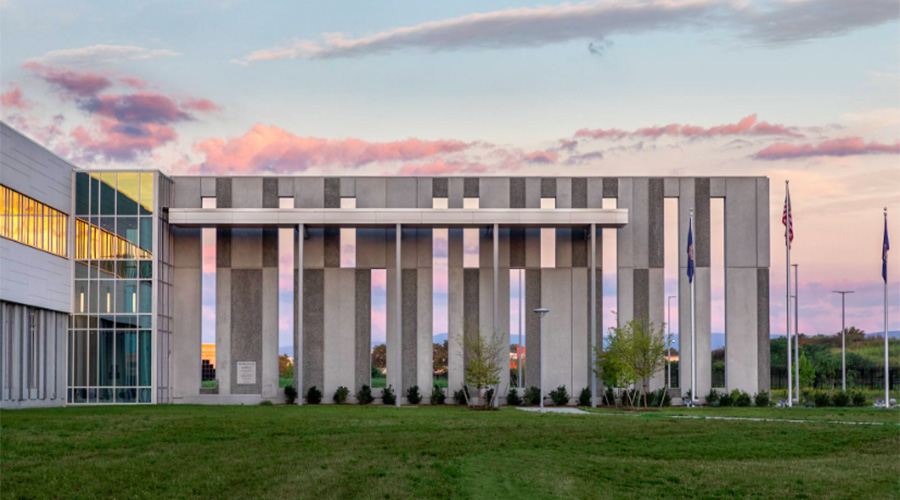Security Top Priority for Government Buildings

Oklahoma City bombing in 1995 played vital role in ensuring that safety ranks as a priority over aesthetics.
Here’s a 21st-century challenge for building architects: Design a government building that meets security mandates but also looks and feels inviting to the public, and do it on a tight budget.
The security aspect alone might have facility managers reaching for aspirin. Depending on the project and the risks, there is no shortage of things to consider: perimeter fences, guarded entrance gates, metal detectors, surveillance cameras and restricted areas. Not to mention technology.
“The bad guys can be incredibly creative,” says Jay Scruggs, principal for HGA, a national interdisciplinary design firm rooted in architecture and engineering, which has 13 offices across the country.
Scruggs has decades of planning, design and project management experience. He has worked on government, corporate, healthcare and higher education projects.
He said the focus on security intensified in 1995 with the bombing of the Alfred P. Murrah Federal Building in Oklahoma City, Oklahoma. That remains the deadliest act of domestic terrorism in U.S. history, claiming 168 lives.
In the wake of the bombing, the Department of Homeland Security established five security level ratings based on a federal building’s symbolic value, how “mission critical” its functions are, the number and characteristics of its occupants and visitors, and a risk assessment of potential threats.
“There started to be serious looks at how we protect federal buildings, keeping vehicles away,” Scruggs says. “Structural design has changed. Jersey barriers were used initially, but since then things have gotten a lot more subtle. Sites were organized so that roads were at a distance and barriers were natural looking. Site planning got fairly sophisticated.”
Functional landscapes, proper lighting, unobstructed views and clear wayfinding grew in importance in the effort to balance aesthetics and security. Of course, the needs of a federal building might be completely different from those of a comparatively low-risk municipal facility.
Facility managers can play a significant role in planning.
“They have a fairly large say in how things go,” Scruggs says. “They are the ones who have to figure out how to service (a building).
“Security really does rule the day. Certain building types have SCIFs (sensitive compartmented information facilities) inside and don’t have windows because the bad actors are getting more sophisticated with the ability to spy. The issue becomes how we can at least have areas where people can use phones and look outside. Maybe that’s a cafeteria or a work lounge or a fitness room.”
At the start of a building project, what Scruggs calls “security in depth” will analyze threats and how they might affect construction. For example, forced entry might not be a concern on a restricted campus, but the circulation paths of employees might be.
Still not convinced aesthetics and security are compatible? HGA has a couple of examples that say otherwise.
The FBI Central Records Complex in Winchester, Virginia, has landscaped areas that draw attention away from a security fence and bollards, toward an elegant main entry.
The record collection aspect of the project was the central focus, as it required 100,000 square feet of document storage space. HGA coordinated an innovative solution using an automated storage and retrieval system. Fire-rated shutter doors provide fire-rated partition compliance while controlling access for the storage retrieval robots, ensuring records safety.
The entrance to theLoudoun County (Virginia) government facility phase 1 office buildingis landscaped to create a courtyard. The strategic use of lighting and pathways allows people to pass through from different directions and at varying times throughout the day while maintaining security and visibility.
By Doug Carroll, Contributing Writer
Doug Carroll is a freelance writer based in Chandler, Arizona.
Related Topics:
The post "Security Top Priority for Government Buildings" appeared first on Building Operating & Management

